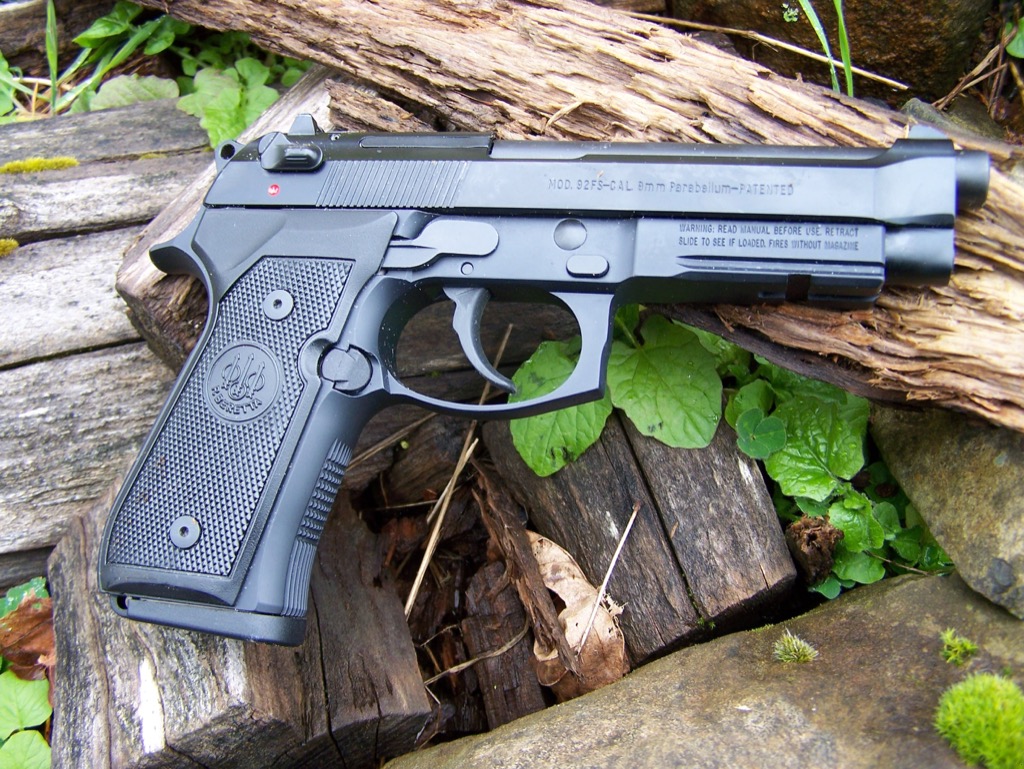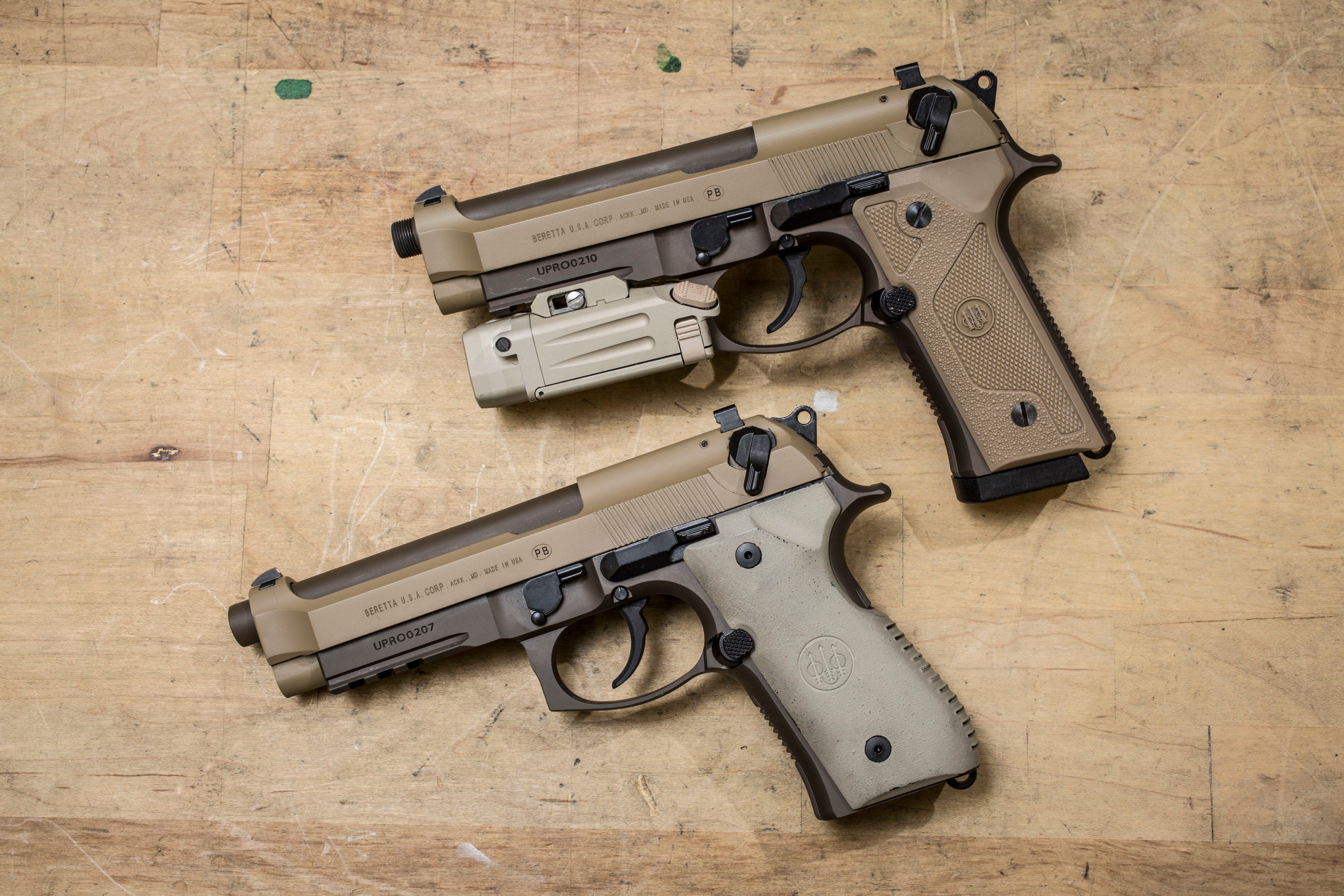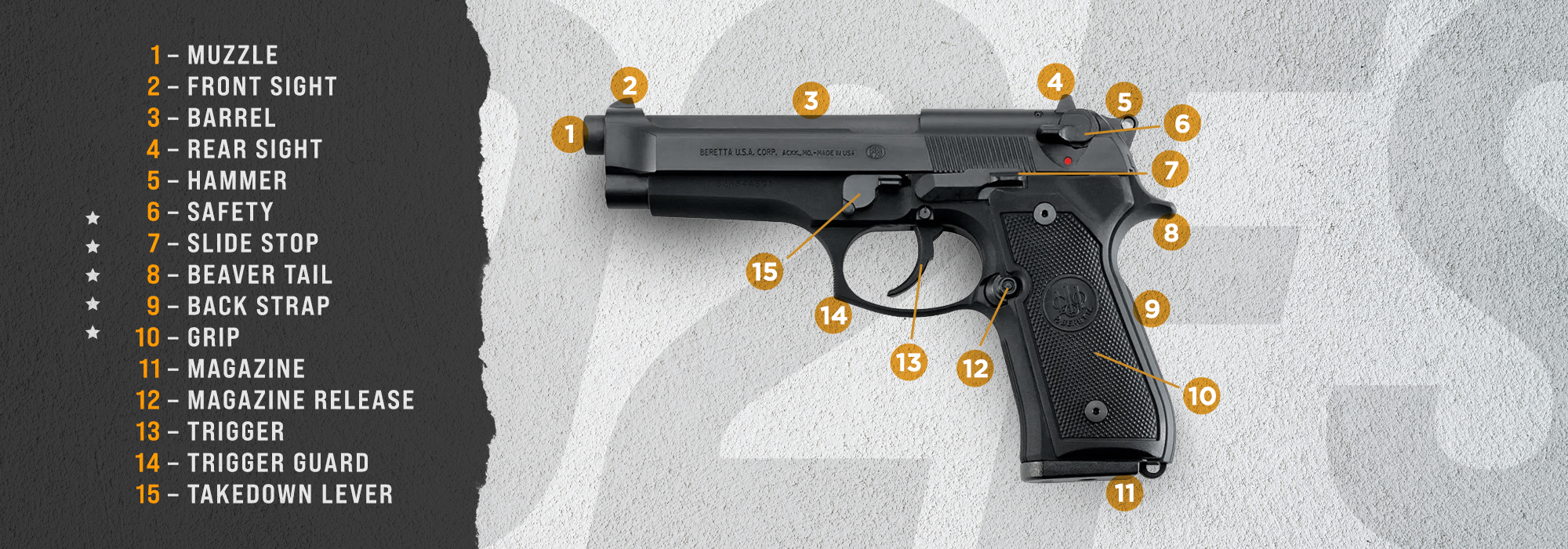Military Beretta M9 - US Military Finally Banned for Beretta M9: The retirement of the Beretta M9 handgun has some people excited, while others wonder if a replacement is worth the money and effort.
At least 200,000 SIG Sauer M17 and M18 pistols are currently in service in the US military. SIG won the XM17 Modular Handgun System competition to replace the Beretta M9 in 2017. Critics cited the Beretta's size and weight as drawbacks. They felt that the M9 could not adapt to different hands. It can also be disabled.
Military Beretta M9

Sometimes we forget that the M9 was born for a reason and history: the M1911 is getting old. He only has seven or eight rounds. This is where the Beretta M9 came into being. It fires the 9mm cartridge, which is classified as NATO. It has a 15-round magazine. And some believe it is smaller than the M1911.
Buy Beretta M9 Super
Below is the history of the Beretta M9 and why the US military decided to go a different route after years of faithful service. History of the Beretta M9
The M9 is the military version of the Beretta 92FS. Italian designers wanted to improve the Beretta 92. The original 92 was based on the flagship and best-selling Beretta Model 1951 Brigadier that the world developed after World War II. In 1975, Italian special forces used the 92FS with the Brazilian military.
By 1978, the Americans were testing a new firearms program called the Joint Services Small Arms Program. It was intended to be a step up from the popular M1911. Heckler & Koch, Fabrique National (FN), Walther and Smith & Wesson participated in the competition. Colt tried to win again. DOD wanted exceptional security, easy magazine loading, and good retention.
The Beretta 92FS outperformed other competitors in the first test conducted by the Air Force. But the Army disagreed with the Air Force's findings and cited problems with the test data. The Navy had no problem with the Air Force's attempt and bought the Beretta.
A Fine Blade: The Beretta M9 Is A Great Service Pistol, So Get Over It
But the army did not give up and ordered a second test in 1983. Problems arose, too, and the Joint Small Services Program called for another test in 1984 between the Beretta 92 SB-4 (by which time Beretta had perfected the 92FS.) the SIG Sauer P226. The Beretta 92 SB-4 won out due to its lower price and was renamed the Beretta M9. But the M9 has proven itself to be a formidable weapon, having passed tests in salt water, extreme heat, drops, and being buried in mud and snow. The military immediately ordered 315,000 pistols at a cost of about $75 million.
Using an Italian company ruffled some feathers because an American company had never won, but the Beretta M9 was made in an American factory in Accokeek, Maryland. It has a fast double-action/single-action design. The open slide design and exposed barrel make the cartridges easy to fire. The Beretta M9 has its first unsatisfied customer
The M9 had the first bad luck that caused the first critics. In 1986, a member of SEAL Team Six malfunctioned while showing a gun to a visitor. The gun went off and hit him in the face. Then the SEALs turned to the SIG P226. Long-term use and advanced model

However, the M9 continued to be used by other parts of the US military, notably in Operation Desert Storm and the Global War on Terror in Iraq and Afghanistan. Beretta listened to the critics and updated the M9 in 2006, the M9A1, adding an accessory rail system, a larger magazine well, and a new cover for dry and dusty environments.
The Beretta M9 Was A Us Military Gun Legend: Why Was It Replaced By Sig Sauer?
Despite the improvements, the M9A1 still has its shortcomings, according to some users. The gun was on the heavy side and the grip did not fit both hands. It did not have the stopping power of the M1911 .45 ACP round. On the other hand, the SIG M17/18 uses advanced bullets. Does the military need a new weapon?
Security analysts believe the American Security Project is an example of government waste. In the report, they argue that new weapons are often not needed in war. These weapons of "last resort" usually don't turn the tide in war because they aren't used like weapons, according to the Policy Institute. Tricks don't become new thanks to weapons.
To critics who complained about the suspension of power, the Project on American Security said it could be solved with better training. And reliability complaints can be caused by poor maintenance.
But the M9 is also getting long in the tooth. It's time for a change as the military moves toward conventional warfare with more powerful competitors. Competition always produces better weapons. The SIG Sauer M17/M18 faced early problems, such as accidental discharges in this special model (P320), but the manufacturer says these issues have been resolved. Many believe it is time to replace the military with another handgun.
Final Flight Outfitters Inc.| Beretta Beretta M9 Pistol
. He is a trained terrorist and former US Army infantry officer. You can follow him on Twitter
Currently serving as editor of 1945's New Defense and National Security, Dr. Brent M. Eastwood is the author of Men, Machines and Information: Future Trends in War. He is an emerging threats expert and a former US Army infantry officer. Beretta M9, officially Pistol, Semi-Automatic, 9 mm, M9, is the name of the Beretta 92FS semi-automatic pistol used by the United States Armed Forces. The United States Army adopted the M9 as its rifle in 1985.
The 92FS won the race to replace the M1911A1 as the US military's primary weapon in the 1980s, beating out many other competitors and losing to the SIG Sauer P226 on cost alone.

Other pistols are used to a lesser extent, namely the SIG P228 pistol, and other models are used in specific niches.
U.s. Army Drops Beretta, Opens Competition For New Sidearm Pistol
The M9 was slated to be replaced by the United States Army's Future Handgun System (FHS) program, which merged with the SOF Combat Pistol program to create the Joint Combat Pistol (JCP). The JCP was replaced by the Combat Pistol (CP) and the number of pistols sold was greatly reduced. The US Army, Navy, Air Force and Marine Corps have replaced the M9 with the SIG Sauer M17 and M18.
In the 1970s, all branches of the US Armed Forces (except the US Air Force) carried the .45 ACP M1911 pistol. The USAF chose to use .38 Special revolvers, which were also carried by some criminal investigation/police agencies, USAF strategic missile (ICBM) teams, and members of military teams in all services operating in war or deployment zones. on nuclear weapons commitments.
The Defse Department decided to coordinate the weapons of all five US branches. The military from the ground warfare branches knew this arrangement was too big. But they knew that this decision was made to eliminate the need to buy replacements for worn M1911 frames and to create a common NATO cycle to facilitate logistics (in the event of wars against the Soviet Union in Europe). . . In 1979, the Joint Small Arms Program began research on a replacement for the verable M1911, and the 9×19mm Parabellum was selected to comply with the NATO Standardization Agreement (STANAG). In 1980, the Beretta 92S-1 design was chosen from among the Colt, Smith & Wesson, Walther, Star M28, and Fabrique Nationale and Heckler & Koch models.
However, the result was disputed by the US Army and the Army conducted new tests. In 1984, testing began again with new models from Smith & Wesson, Beretta, SIG Sauer, Heckler & Koch, Walther, Steyr and Fabrique Nationale. Beretta won that competition, but in 1988 there was another attempt, the XM10 competition. This resulted in two separate trials that were more limited but resulted in the selection of the Beretta, albeit with a new design.
Us Army Modular Handgun System (mhs) Program To Replace Beretta M9/92f Pistol: Glock 17 (g17) And Glock 19 (g19) Combat/tactical Pistols Should Get The Nod
Beginning in 1979, as the gun selection process progressed, the Bianchi International holster company began developing a multi-functional military product in preparation for release. A new weapon. The final version was designed by John Bianchi and Richard Nicholas and was called the M12. The M12 served the US armed forces well for many years and was used with the introduction of the Beretta 92FS in 1985.
The Beretta 92FS successfully passed a number of storage tests that included: exposure to temperatures between -40 and 140°F (-40 at 60°C); salt water exposure test; steady rain on concrete; and buried sand, mud and snow. In addition, the 92FS has a guaranteed MRBF (meaning cycles before failure) of 35,000 cycles, a number often referred to as five or six times the weapon's life. But that's normal
Iraq War,

Sig p365 tulster holster, sig p365 iwb holster, sig holsters p365, sig p365 sas holster, sig p365 xl holster, sig p365 hybrid holster, appendix holster sig p365, safariland holster sig p365, sig p365 belt holster, sig p365 holster, sig p365 purse holster, sig sauer p365 holster
0 Comments